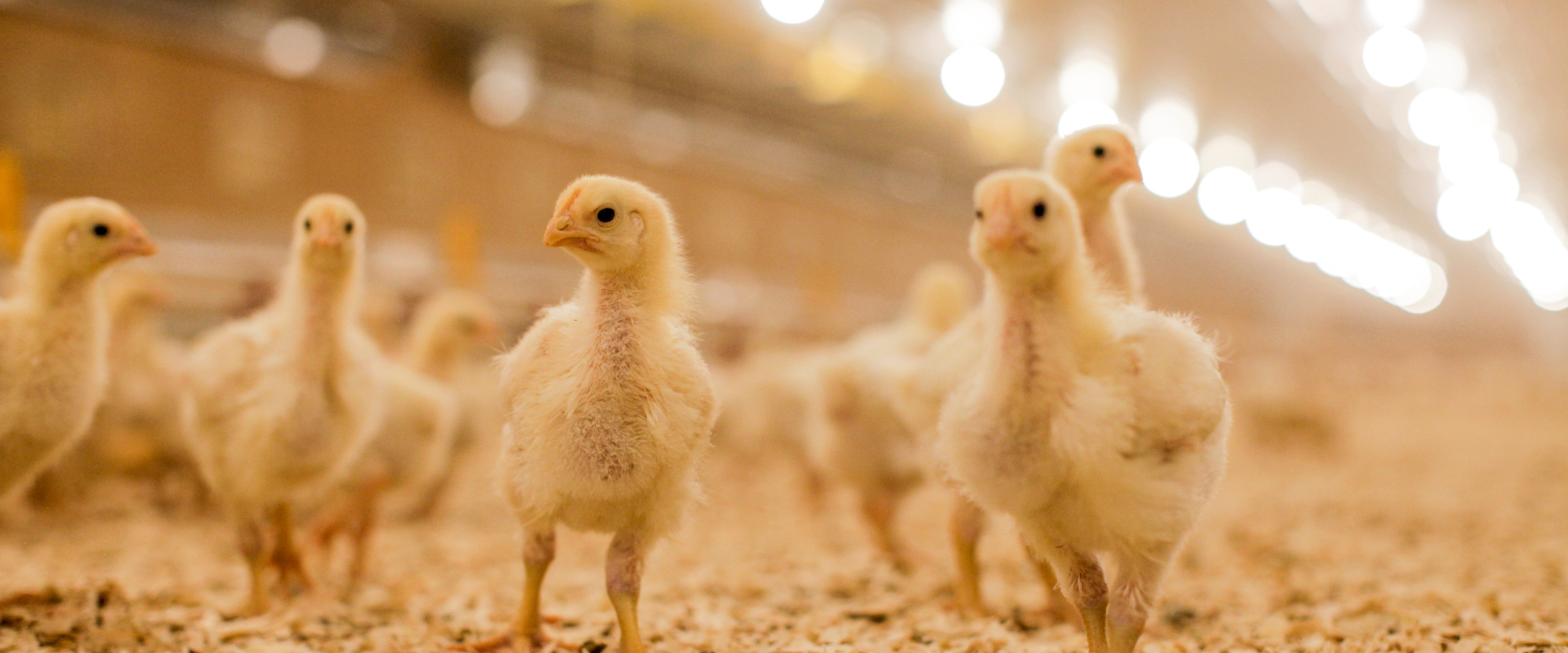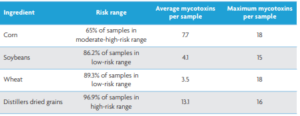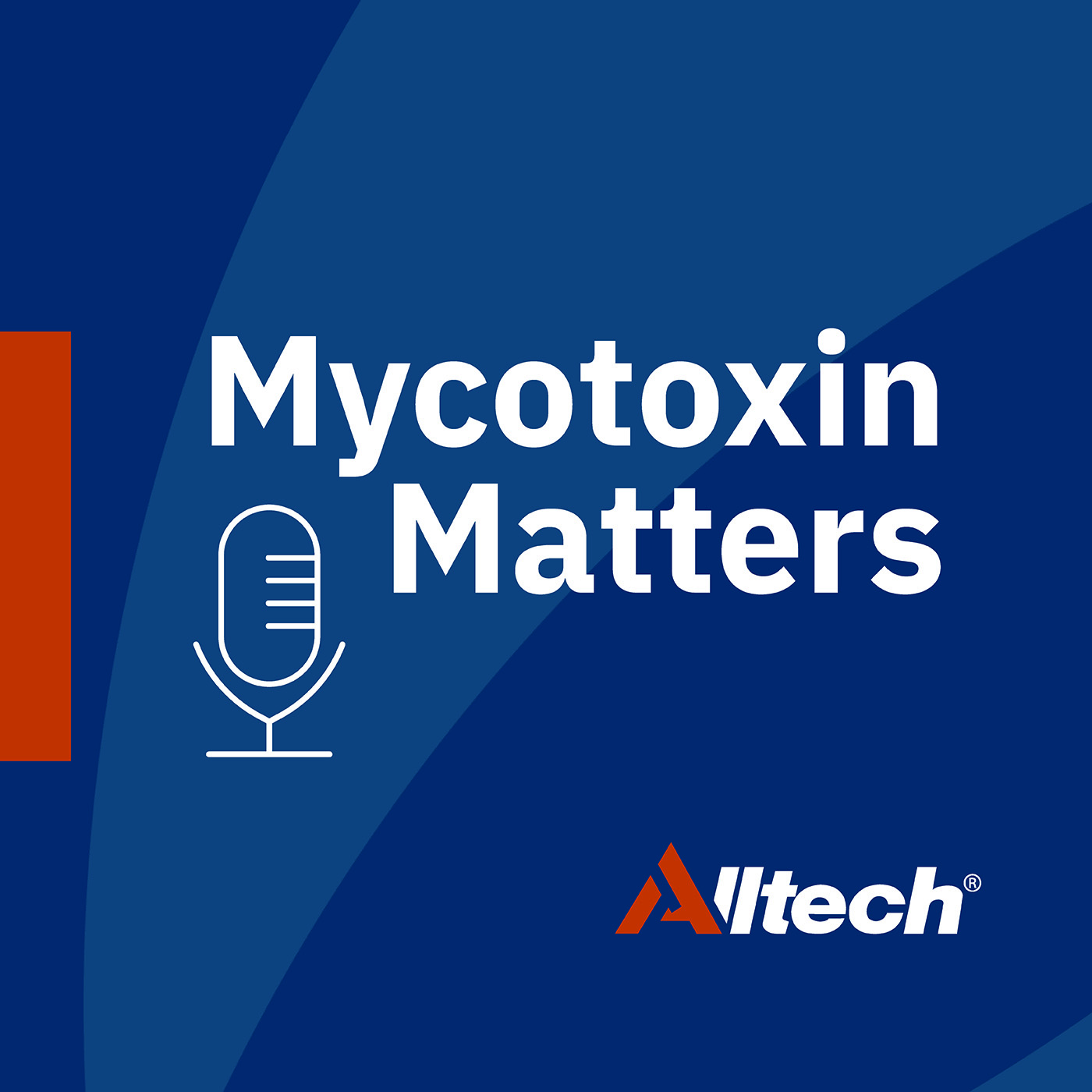Keep ahead of the threat
Stay up to date with the latest mycotoxin information by signing up to our newsletter

Understanding mycotoxin risk and the impact on egg and chick quality
Author: Paula McCooey, Poultry Manager, Alltech Ireland
Click below to listen to the Mycotoxin Matters podcast episode with Paula McCooey and Reg Smith, hosted by Nick Adams. Uncover the hidden threats mycotoxins pose to bird health, fertility, and overall performance, particularly in high-value breeding stock. This episode also delves into the 2023 harvest challenges stemming from extreme weather events, underscoring the pivotal role of mycotoxin testing and management.
You can listen to the episode on Apple Podcasts or Spotify. You can also find an edited transcript at the bottom of this page.
Mycotoxins are naturally occurring, toxic secondary metabolites produced by fungi that can be found in feedstuffs such as cereal grains and their by-products. Mycotoxins can occur prior to harvest as well as after harvest, during transport and during storage.
Once these metabolites are formed, they are chemically stable and continue to persist in the contaminated ingredient even after it becomes a finished feed. Although mycotoxins can occur individually, contamination with multiple types of mycotoxins in a single feedstuff source tends to occur more frequently. Exposure of birds to multiple mycotoxins increases risk through additive or synergistic interactions. Mycotoxins can negatively affect livestock both directly and indirectly. The impact of mycotoxins on poultry is complex, as sometimes clinical mycotoxicosis is evident while chronic exposure may not be clinically obvious. In birds such as broiler-breeders, mycotoxin contamination at commonly found levels may decrease egg production and shell quality and increase embryonic mortality without having clear effects on the breeder. As an industry, we are learning more about subclinical mycotoxicosis, especially as acute outbreaks are becoming less common; however, diagnosis can often prove difficult. Mycotoxins exert toxic effects mainly on the gastrointestinal tract, liver and kidneys and can accumulate in some tissues but also in eggs. In breeding birds, productivity, egg quality, hatchery performance, and chick quality and immunity can be harmed by mycotoxin contamination.
Where is the mycotoxin risk coming from?
Based in Ireland and the US, the Alltech 37+ analytical laboratories provide a detailed picture of contaminants in raw materials and finished feeds. With the ability to detect 54 individual mycotoxins in every sample, Alltech 37+ can identify the full, broad-spectrum challenge of mycotoxins. Looking at feedstuffs used in poultry production, data from more than 700 ingredient and complete feed samples shows that 96% were contaminated with two or more mycotoxins. The most common toxins were emerging mycotoxins (97.4%), fusaric acid (72.9%), Type B trichothecenes (71%) and fumonisins (68.2%). Type A trichothecenes, zearalenone and ergot toxins were also found in over 20% of samples. Particular contamination hot spots can be found in North America and in parts of Europe and Asia. Extreme weather events such as drought and flooding, as well as changing weather patterns, can lead to substantial changes in mycotoxin distribution, frequency and spread. In a hanging climate, mycotoxins have the potential to contaminate new geographical areas and crops.
Individual feed ingredients
Maize, millet, wheat, sorghum, soybeans, peanuts, and by-products created from contaminated core ingredients are the most sensitive crops to mycotoxins. In poultry diets, corn and its by-products tend to contribute the most risk, while small grains tend to be lower-risk ingredients. However, when we look at the individual ingredients from the 700 poultry samples, we can see that low-risk does not mean no risk. While on average wheat and soybeans have a low number of mycotoxins per sample, there were as many as 15 (soybean) and 18 (wheat) different mycotoxins detected in individual samples.
The effects of mycotoxins in broiler-breeders
Mycotoxins can cause damage to organs and have a negative impact on reproduction, gut
health and immunity, directly affecting breeder performance, hatchability and therefore profitability. Once in the body, mycotoxins distribute through different pathways. They can accumulate in fat tissues, leading to penetration of the blood-brain barrier and the placental barrier. The half-life elimination time, or the time required to reduce the initial plasma concentration of the toxin, can be very long in the case of chronic exposure.
Damage to organs
The gastrointestinal tract of the bird is the first organ to encounter mycotoxin contamination in the feed. Aflatoxins, type A trichothecenes (for example, T-2 toxins), type B trichothecenes (for example, deoxynivalenol, or DON), fumonisins, ochratoxins and ergot toxins all damage the gastrointestinal tract in various ways, causing problems such as mouth lesions, compromised intestinal integrity, reduced feed intake, reduced nutrient absorption, immunosuppression and wet litter.
Reproduction
In breeders, these toxins can impact sexual maturity and can decrease egg production, egg quality and immune protection in day-old chicks. Poor fertility in both males and females is a common symptom of mycotoxin contamination. In males, mycotoxins such as diacetoxyscirpenol (DAS) can reduce reproductive organ weights and cause degenerative processes of the testes, which leads to reduced spermatozoa quality and an overall diminished semen quality.
Gut health
Ochratoxin contamination can lead to a variety of issues, including intestinal inflammation, diarrhoea, intestinal fragility and, in some cases, feed refusal. A classic sign of ochratoxin toxicity is kidney damage marked with increased levels of uric acid. Fusarium mycotoxins such as trichothecenes, fumonisins and zearalenone can all harm the gastrointestinal tract. The trichothecene group contains mycotoxins like DON and T-2/HT-2 toxins. Studies have demonstrated how the presence of T-2 toxins can lead to mouth lesions, growth depression, reduced feed consumption and decreased egg production. Although DON has been found to decrease nutrient uptake and intestinal cell integrity, its presence can actually increase the nutrients available for certain bacterial growth (for example, Clostridium perfringens, which causes necrotic enteritis). It also increases gut permeability, allowing nutrients to leak outside of the intestines.
Immunity and vaccine failure
Mycotoxins, even at lower levels, can impact the innate and acquired immune responses in birds, which in turn decreases the response to vaccines. Although mycotoxins’ effects on rapidly differentiating and proliferating cells are complex, the common mechanism for immunosuppression is through inhibiting protein synthesis. As a result, signals for the synthesis of antibodies and immunoglobulins are downregulated. Studies looking at vaccine response in the face of a mycotoxin challenge have consistently reported a reduction in titers, decreased white blood cell counts, reduced immunoglobulin levels and low immune organ weights. Contamination of feed with aflatoxin was reported to lower antibody titers of inflammatory bowel disease, infectious bronchitis and Newcastle disease in immunised birds. Aflatoxin and T-2 toxin have been reported to affect Marek’s vaccine programmes. Aflatoxins can also decrease iron absorption and interact with nutrients like riboflavin and vitamin D. Some researchers have suggested that aflatoxin contamination might also impair nutrient digestion in the small intestine and decrease the bird’s ability to protect itself from stressors. Fumonisins have been linked to black adhesive diarrhoea in layers and mucous diarrhoea in other poultry species. In general, these mycotoxins can suppress the immune system, which increases the risk of secondary diseases – bacterial or viral – and impacts performance parameters.

Table 1. Data from the Alltech 37+ mycotoxin testing laboratory shows that low-risk does not mean no risk.
Impact on chick quality
With mycotoxins reducing fertility, egg quality and immunity in the broiler-breeder, it is hardly a surprise that there will be negative consequences for the progeny of these birds. Poor hatchability and increased embryonic mortality are seen at the hatchery. Breeders exposed to feed-borne mycotoxins show a higher incidence of weak and immunosuppressed chicks. Breeders exposed to aflatoxins and ochratoxins are reported to have chicks with decreased cellular and humoural responses.
Managing the mycotoxin challenge
In broiler-breeder operations, profitability greatly depends on the quality of the egg and on fertility and hatchability. Mycotoxins have been found to be toxigenic to egg production and quality, reducing profitability. Understanding the contamination profile of the feed and ingredients used is key to managing the risk from mycotoxins. A regular and comprehensive testing programme that identifies a broad range of mycotoxins is one of the most important first steps in the implementation of a successful mycotoxin control programme in a poultry business. From advanced detection to in-feed nutritional solutions, Alltech has a suite of tools to assist poultry producers in managing the mycotoxin challenge.








